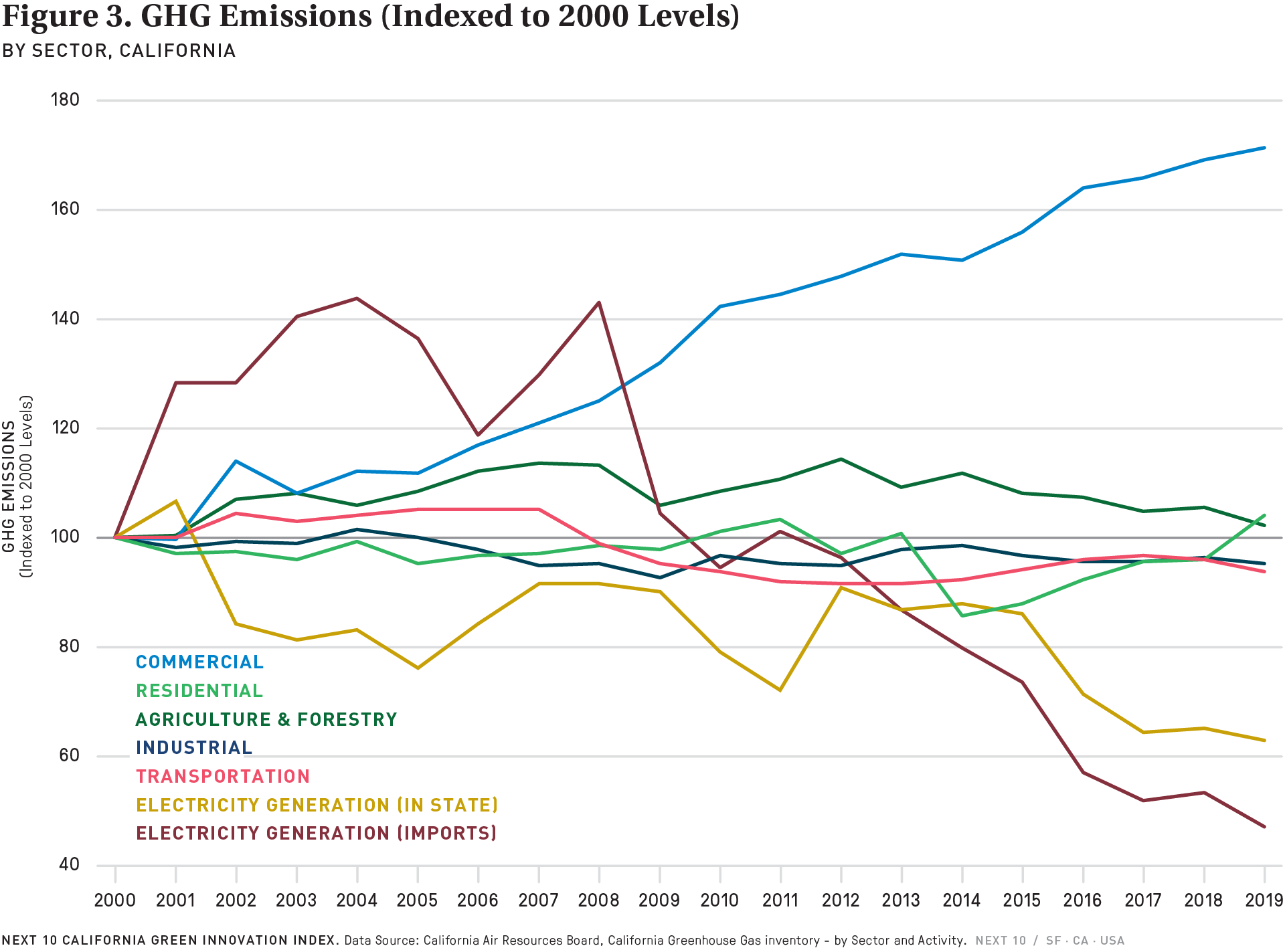Challenge
- So far, only the electric power sectors have seen dramatic reductions: 37.1 percent for in-state generation and more than half (-52.8%) for imports compared to 2000 levels. Electric power emissions were up in 2018, due to decreases in hydro production, but they were 1.5 percent lower in 2019 than 2017. As the grid becomes cleaner and threats from natural disasters such as drought and wildfires persist, further emission cuts may become more difficult,2 making the work to reduce other sectors all the more critical. Particularly, GHG emissions in the commercial sector keep increasing (+71.3% relative to 2000) and show no sign of slowing down. In recent years, GHG emissions from the residential sector have also been continuously rising (+21.4% compared to 2014), with natural gas combustion being the largest driver of GHG increase in the sector.
2 The state has approved additional natural gas power plants to come online recently due to electricity shortages, that are expected to operate on contingency basis only. See the the Renewables Chapter for more.
More About the
Carbon Economy
Related Content
